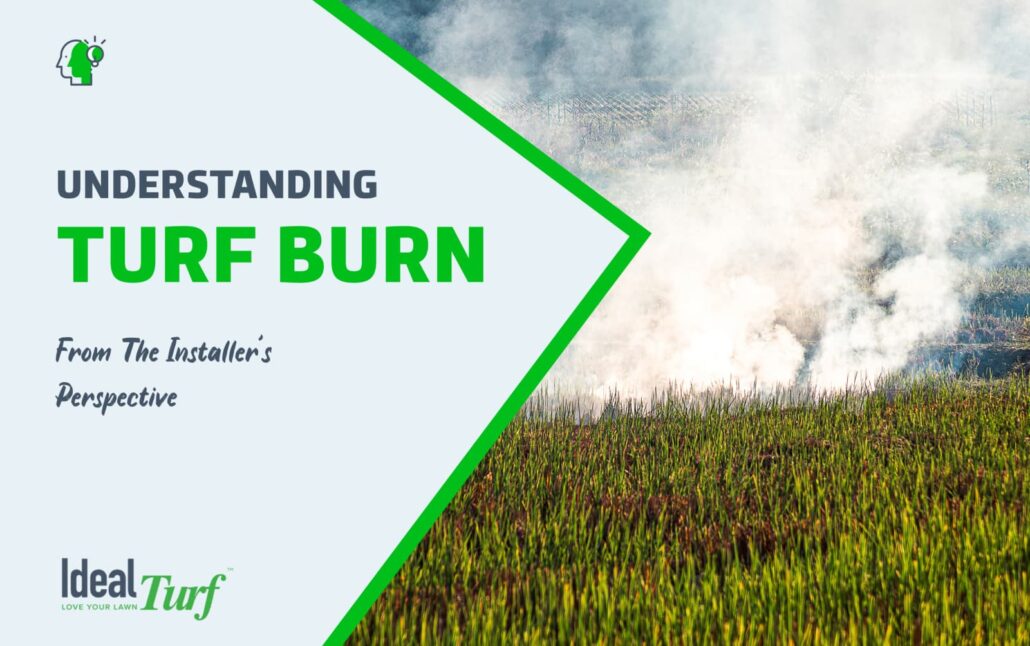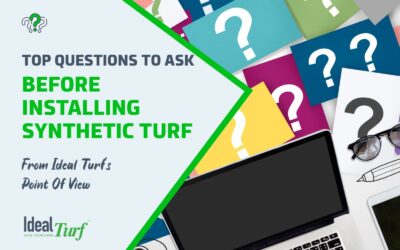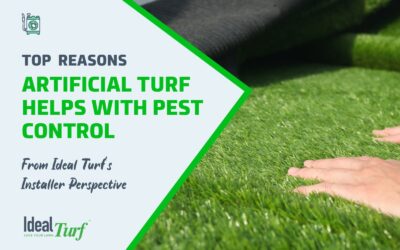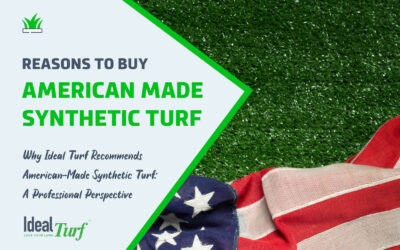Understanding Turf Burn – From the Installer’s Perspective

At Ideal Turf, we’ve installed thousands of artificial lawns and pet-friendly play areas, and one of the most avoidable issues we see—especially in hot climates—is something known as turf burn. While artificial turf offers year-round greenery, low maintenance, and great durability, it’s not immune to environmental stress—particularly when heat is involved. Here’s what you need to know about turf burn, how it happens, and how to prevent it.
What Is Turf Burn?
Turf burn occurs when intense heat—often caused by sunlight reflected off windows or shiny surfaces—causes sections of artificial turf to overheat, melt, or warp. The result is often unsightly damage: discolored patches, melted blades, or even deformed sections of the turf surface.
What Causes Turf Burn?
- Reflected Heat from Low-E Windows
Low-emissivity (Low-E) windows are great for energy savings in a home, but they can act like magnifying glasses for anything outside. When sunlight reflects off these windows, it can create concentrated beams of heat—enough to damage synthetic turf within minutes.
- Shiny Surfaces and Objects
We’ve seen damage caused by things like car mirrors, stainless steel grills, and even reflective garden art. These items can unintentionally focus sunlight onto your turf, leading to localized hot spots and burn marks.
- Turf Installed Over Padding
In high-heat areas, installing polyethylene turf over padding can actually intensify heat retention. Since the heat has nowhere to escape, it reflects back into the turf—causing fibers to break down or melt prematurely. This is why we often recommend nylon-based turf for these installations.
- Neighboring Property Reflections
Sometimes, the burn isn’t coming from your own home. A neighbor’s Low-E windows can reflect enough heat onto your property to damage turf. This is especially common in suburban areas with close lot lines.
How to Prevent Turf Burn
Use Heat-Resistant Nylon Turf
At Ideal Turf, we prefer nylon-based synthetic turf for heat-sensitive installations. Nylon has a much higher melting point—around 450°F—compared to polyethylene or polypropylene turf, which can start to deform around 240°F. Nylon also holds its structure and color better under intense sun.
Install Window Films or Solar Screens
Applying window tint or adding solar screens to reflective windows is a great way to reduce heat glare. It’s especially useful if the problematic windows are your own. This simple fix can protect your turf and improve your home’s energy efficiency at the same time.
Add Shade Where Needed
Pergolas, awnings, and shade sails don’t just improve your yard’s look—they provide valuable protection for turf surfaces that get a lot of direct or reflected sun.
Routine Turf Inspections
We recommend regular visual inspections of your turf, particularly during the hottest months. If you spot discoloration or signs of warping, it’s best to act quickly before the issue spreads.
Final Thoughts from Ideal Turf
Turf burn can be a frustrating issue, but with the right planning and materials, it’s almost entirely preventable. Choosing the right turf product, like our heat-resistant nylon options, and understanding your landscape’s sun exposure are key to a long-lasting installation. Whether you’re a homeowner or a commercial property manager, Ideal Turf is here to guide you through smart turf choices that hold up beautifully—even in the toughest conditions.
Author: Tim Taylor
Recent Posts
- How Synthetic Turf Helps Keep Fleas and Ticks Out of Your Texas and Oklahoma Yard
- Porches, Patios & Personality: Creating Outdoor Spaces Texans Love
- Turn Your Backyard into a Golfer’s Dream: Custom Putting Greens by Ideal Turf
- Why Texas Pet Owners Are Choosing Pet-Friendly Artificial Grass from Ideal Turf
- Why More Texans and Oklahomans Are Turning to Artificial Grass for a Greener Future






